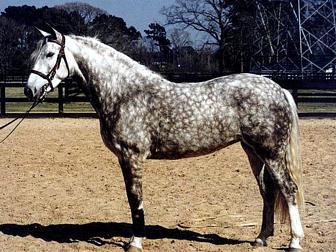
OVERVIEW
The Irish Draft is also known as "the horse of the countryside," because of its use on many small Irish farms. Not only due to the rougher terrain, but also because of the need for a more adaptable horse, one that could be worked as well as ridden and driven, the Irish farmer developed a smaller, lighter horse than the English draft-type horses. When cross-bred with the Thoroughbred, the Irish Hunter is created, said to be one of the most versatile of cross-country horses.
PHYSICAL DESCRIPTION
The Irish Draft stands between 15 and 17 hands high. It has a straight face carried on a short, strong neck. The massive legs are very hard and strong with large, round hooves. There is a noted absence of feather around the ankles. As assured by its background, the Irish Draft is economical to keep. It is active and willing, with a natural ability to jump.
ORIGIN
Although there are no records of foundation sires or early breeding records, one can make relatively safe guesses at the background of the Irish Draft. Horses have existed in the Irish countryside for well over a thousand years, mainly ponies that were the forerunners of the Irish Hobby. The Irish Draft pulls some of its blood from these first ponies, but with many changes. The heavy Norman horses added size and weight to the horses and, later, Andalusian blood erased most traces of Hobby characteristics that the Irish Draft may have carried. The modern Irish Draft is most likely the direct result of Thoroughbred sires crossed with the most powerful mares found throughout the countryside. In 1917 the Department of Agriculture established a book for the establishment of the Irish Draft type, and later, after a slight decline in standards, an Irish Draft Society was set up to promote and preserve the breed.
INTERESTING FACTS
Because of the general use of the Irish Draft, as noted by it being referred to as "the horse of the countryside," breed standards have been hard to come by. The breed nearly disappeared after the Famine of 1847. When Clydes and Shires were introduced shortly thereafter, action was taken to try to keep the breed pure. By 1917, 375 mares and forty-four stallions were entered into a "Book of Horses of the Irish Draft Type" as being suitable to meet the breed status. In the middle of this century, due to a rise in popularity and demand for hunters, the breed was definitely set and promoted by its own breeders society.
INFLUENCES
1. Spanish
2. Flanders
For more information:
Irish Draught Horse Society of North America
Listed as "Study" by The American Livestock Breeds Conservancy (2004)